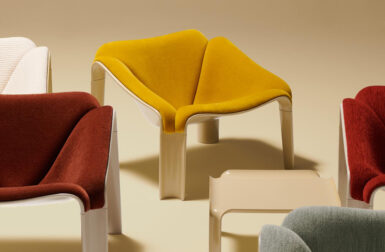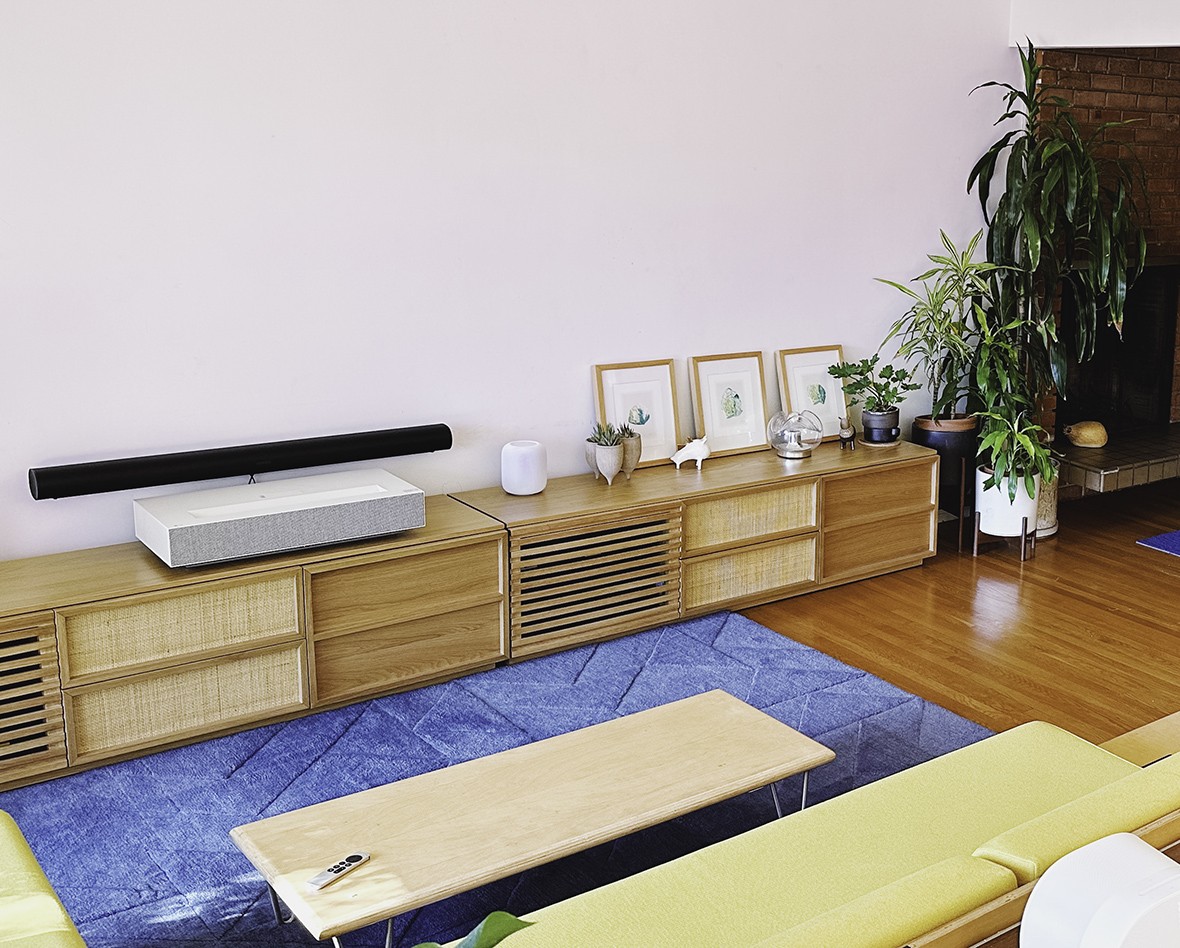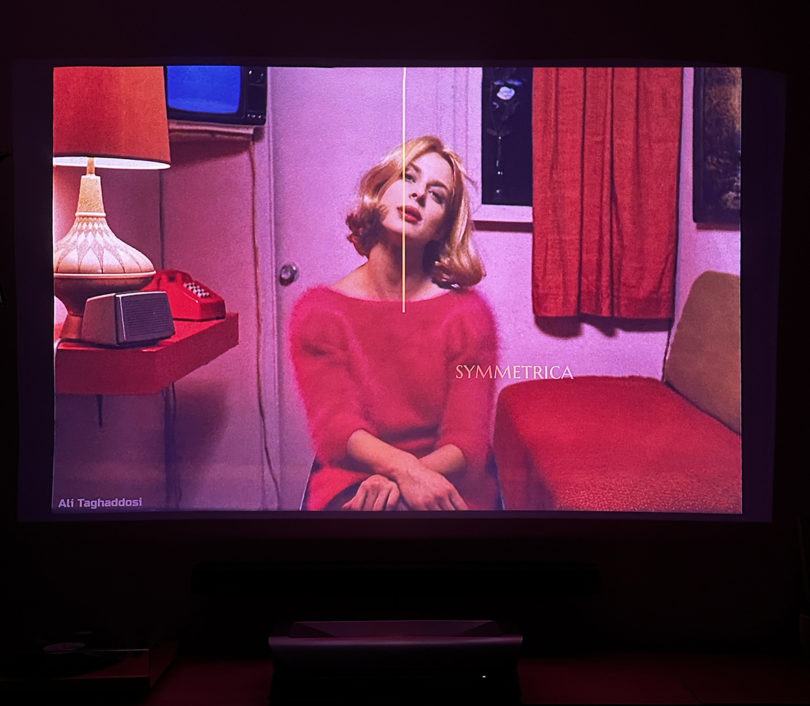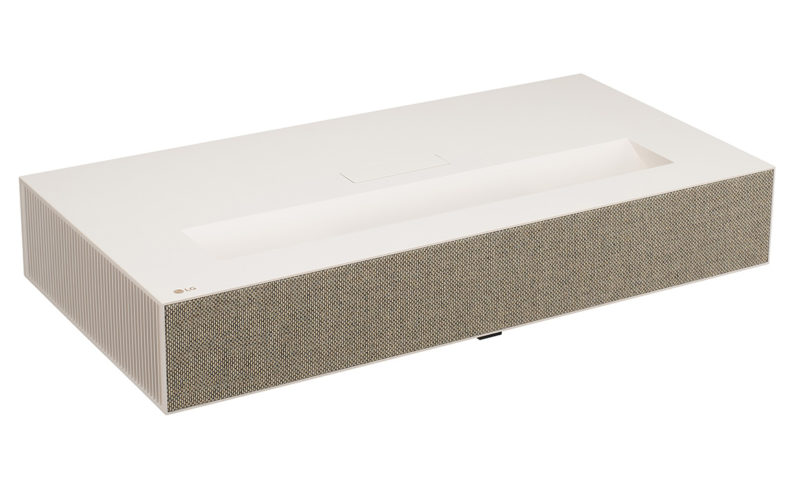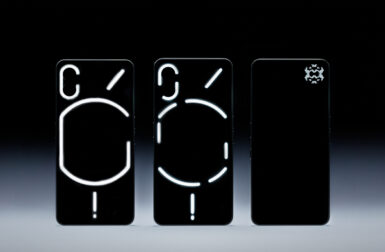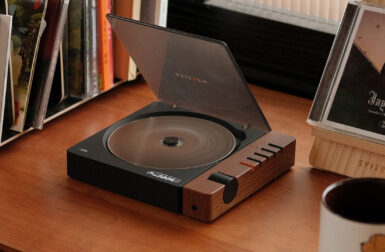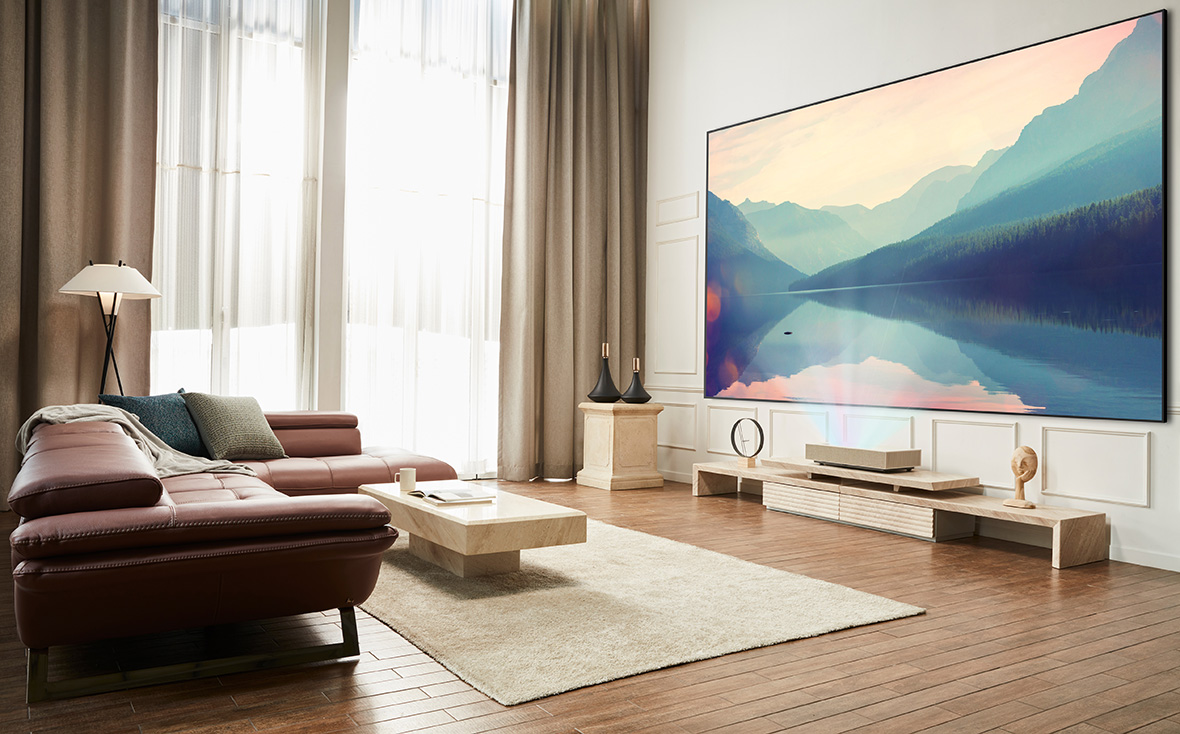
The LG CineBeam HU915QE Projector is an ultra-short throw 4K projection system, a premium “laser TV” capable of transforming the living room wall into an immersive 120-inch screen experience, eclipsing all but the most exclusively priced – yet still smaller – televisions available today. By all standards, it’s the finest projector we’ve ever tested, producing a bright, detailed, and colorful picture delivering the promise of the “theater” in “home theater.” The LG CineBeam is also a game changer when it comes to home decor, a convincing option for anyone who has always wanted a huge picture minus the dominating presence of a large television set within their living room.
Unlike a traditional projector, an ultra short throw projector (UST) is engineered to produce sizable images from very short distances, making it much easier to position within living rooms rather than a dedicated home theater room. Set atop a surface, we’re talking about mere inches. In the case of the LG CineBeam only 2.2-inches from a wall is required to enjoy a 90-inch 3840 x 2160 resolution picture. Nudge the projector back 3.0-inches and now you’re staring back at a 100-inch screen. And if you’ve got 7.6-inches distance to spare, the grandeur of a 120-inch filmic experience can be conjured by its triple laser technology. Across its range of output, the CineBeam produces natural, incredibly sharp and detailed images. Setup is simple and dialing in a sharp image is accomplished literally with a physical dial on top of the unit.
Out of the box, the CineBeam hosts Netflix, YouTube, Disney+, Prime Video, and Apple TV apps powered by LG’s WebOS platform. We connected our review unit to an Apple TV 4K, which we used to watch everything from MUBI-hosted arthouse films, to HBO’s grisly The Last of Us and the conniving comedy of Succession, a plethora of sporting events, and a daily dose of YouTube content on the LG CineBeam nearly nightly. Despite our imperfectly bumpy and sub-optimal white painted walls, the LG CineBeam was able to project Logan Roy’s disdain in all his growling glory, captured the fine pink angora sweater worn by Nastassja Kinski in Paris, Texas with such cinematic textural detail, we felt like we could reach out and feel its softened sorrow.

In our own testing we quickly discovered the biggest picture isn’t necessarily the best. “First row movie theater” syndrome can become an issue if seating distances are not taken into account. So while we demoed the upper limits, we eventually settled into a picture a little northward of 90-inches, a picture size more than sufficient for films, television series, and sports.
The LG CineBeam shines brightly, rated for 3,700 lumens output and a 2,000,000:1 contrast ratio (for comparison, a 100-watt bulb produces 1,600 lumens of light). This combination deals well with indirect ambient light seeping in through windows, something that’s always a concern with projectors which operate by reflecting light off a surface rather than delivering light directly to the viewer as a television.
Our living room comprises a series of sliding glass doors, and we were still able to enjoy an acceptable picture despite the absence of window coverings or the use of an Ambient Light Rejecting screen (an addition that would admittedly boost contrast and vibrancy). We found the LG CineBeam well suited to our typical viewing habits, one heavily weighted toward the evening rather than the day. Even so, in instances we wanted to catch an episode or sporting event during the weekend, those 3,700 lumens proved up to the task to outshine afternoon light.
From a design perspective, LG has veered a bit from the competition. While most ultra short throw projectors are encased in white or black housing (a matte black finish being the most optimal when desiring a projector to disappear from view when the lights go off), the Korean brand has given the HU915QE a fashionable “bisque” hued fabric front redolent of Kvadrat fabric. The sum of the CineBeam’s rectangular simplicity, warmly tinted chassis, and organic textured fabric front equal a minimalist modern device that does well to blend into a space without drawing too much attention – certainly less attention than a typical LCD or OLED television of any size northward of 65 inches.
Speaking of minimalist, the projector houses a built-in 2.2 Channel, 40W speaker system behind its fabric front. That means you could possibly forgo the addition of a soundbar speaker for a clean and simple home theater setup. We still prefer the immersion and more articulate output a dedicated home theater speaker system produces, nonetheless it’s a welcome clutter-free option.

Set atop of a low height media cabinet, the LG CineBeam HU915QE looks more like a storage box than a piece of tech in the day, blending in with the rest of the room while turned off.
Priced at $4,700 the LG CineBeam HU915QE is not a budget pick by any means. But considering a 100-inch LED television today can still set you back $12,000, it’s not a completely unreasonable splurge for the home cinephile or sports devotee, especially when factoring the extra efforts LG put into the Cinebeam’s minimalist details – a design capable of liberating the living room from the occupancy of the television while also impressively pushing the viewing experience into movie theater territory.
This post contains affiliate links, so if you make a purchase from an affiliate link, we earn a commission. Thanks for supporting Design Milk!

